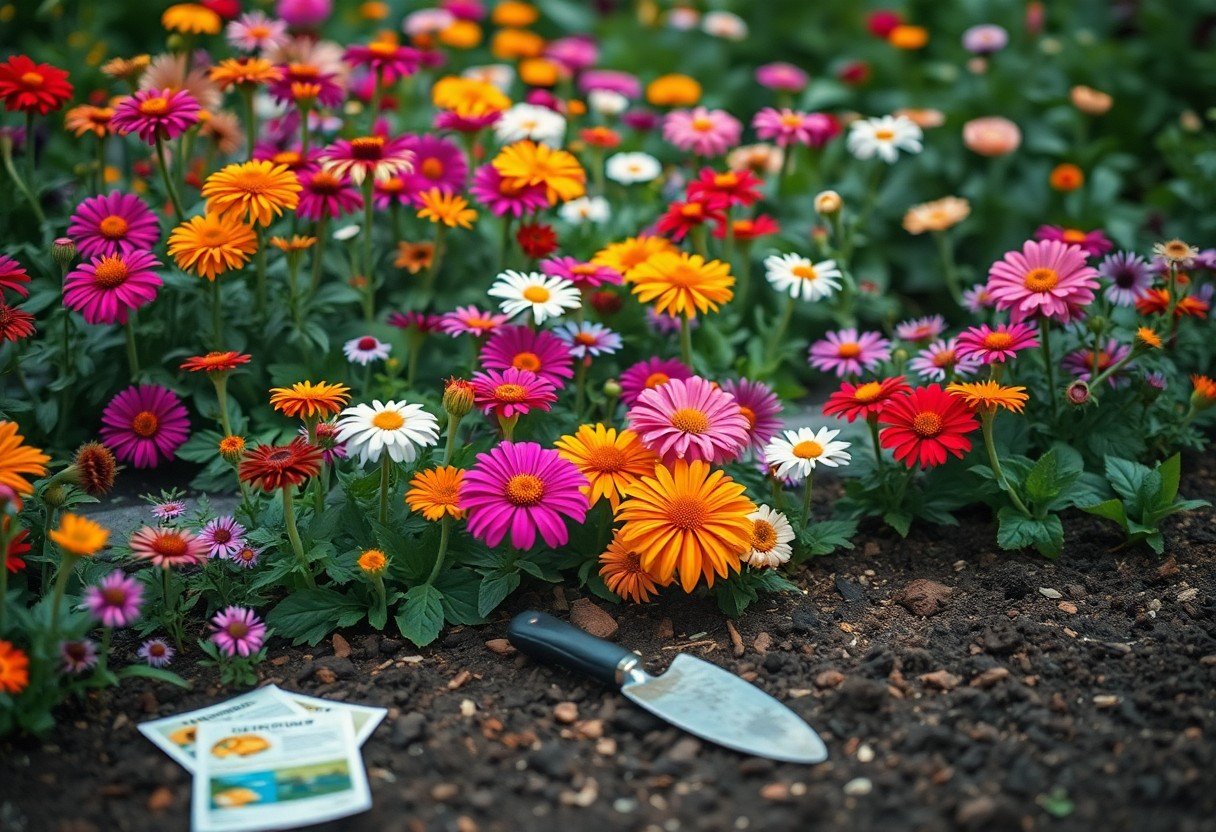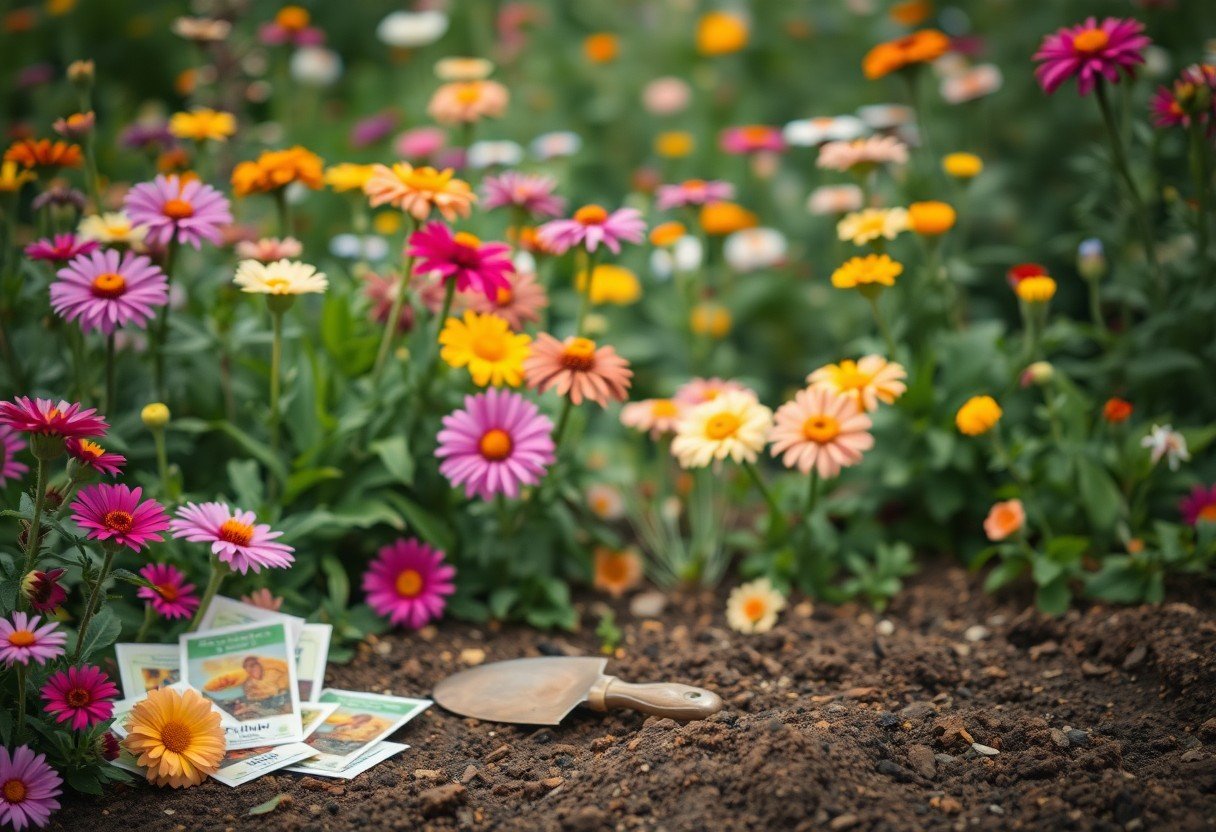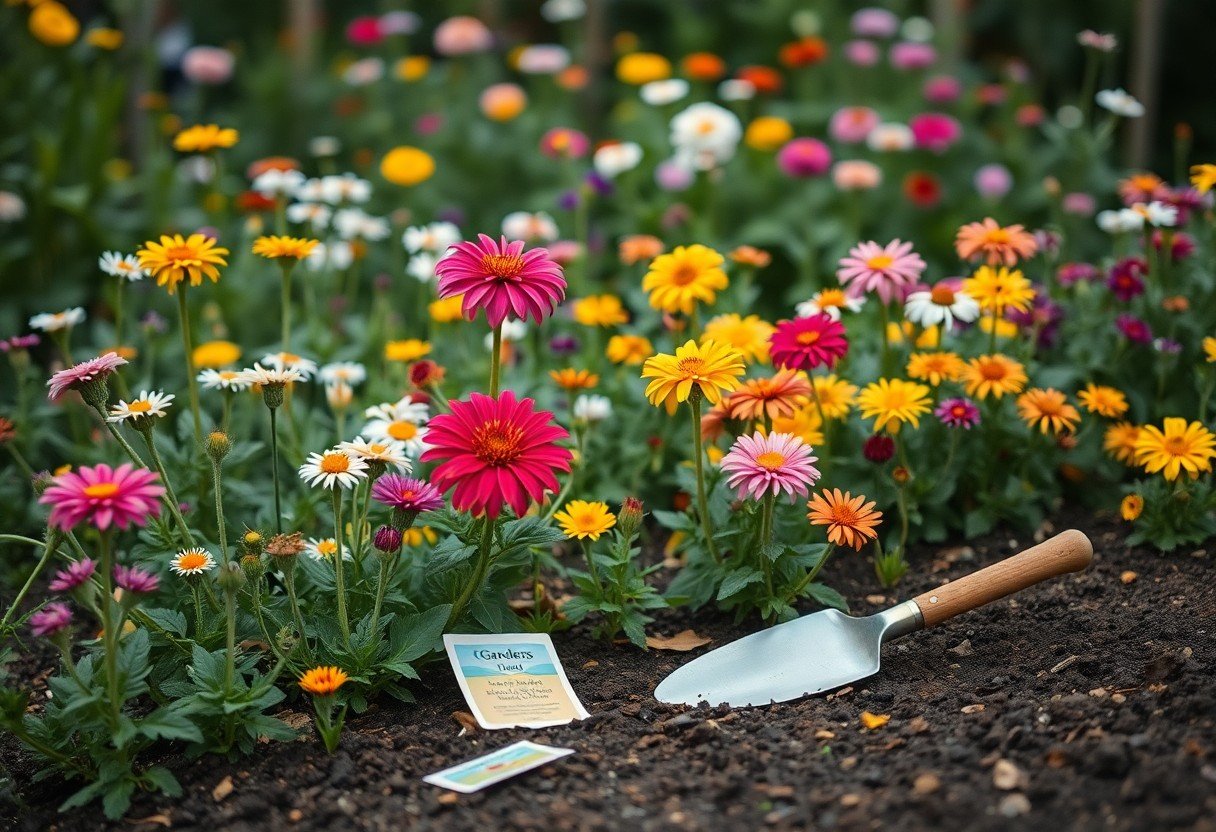You can achieve a stunning display of perennials by directly seeding them in your garden. By following the right techniques, you will be able to give your seeds the best chance to thrive. Your garden will flourish with vibrant colors and textures, adding beauty to your outdoor space. You will learn how to prepare the soil, sow the seeds, and care for your newly seeded perennials to ensure a successful and breathtaking bloom.
Planning and Preparation
A successful direct seeding of perennials starts with careful planning and preparation. You will need to assess your garden’s conditions, choose the right perennials, and prepare the soil for optimal growth.
Understanding the Basics of Direct Seeding Perennials
Perennial plants have unique needs, and you should understand their growth habits and requirements before direct seeding. You will need to consider factors such as sunlight, soil type, and moisture levels to ensure your perennials thrive.
Choosing the Right Perennials for Your Climate
There’s a wide variety of perennials to choose from, and you should select those that are suitable for your climate and region. You will want to consider factors such as hardiness zone, temperature, and precipitation when making your selection.
It is also important to consider the specific growing conditions of each perennial, such as soil pH and nutrient requirements, to ensure you are providing the best possible environment for your plants to grow and bloom. You can consult with local nurseries or gardening experts to determine which perennials will thrive in your area and provide the beautiful bloom you are looking for.
Selecting the Ideal Location
You must consider several factors when choosing a location for direct seeding perennials, including soil quality, drainage, and sunlight. For guidance on getting started, visit Direct sowing: 21 easy seeds to sow outdoors for tips and advice.
Assessing Soil Quality and Drainage
If your soil is heavy clay, sandy, or prone to waterlogging, you may need to amend it before direct seeding perennials to ensure proper growth and drainage.
Evaluating Sunlight and Shade Requirements
Little can affect the success of your perennial seeds more than providing the right amount of sunlight and shade, so it’s vital to understand the specific needs of the varieties you’re planting.
The amount of sunlight your perennials receive will significantly impact their growth, bloom, and overall health, so choose a location that provides the right balance of sunlight and shade for the specific varieties you’re planting, and consider factors like the time of day and season when sunlight is most intense.
Preparing the Soil
While preparing the soil is important for direct seeding perennials, you should start by assessing your soil’s condition. You will need to test and amend the soil to create an optimal environment for your perennials to thrive.
Testing and Amending Soil pH and Nutrient Levels
With your soil test results in hand, you can determine the necessary adjustments to make. You will need to amend the soil pH and nutrient levels to ensure they are suitable for the perennials you are planting.
Removing Debris and Weeds
Nutrient-rich soil is important for perennials, but debris and weeds can compete with them for resources. You should clear your soil of any debris, weeds, and rocks to create a smooth surface for seeding.
Plus, removing debris and weeds will also help prevent potential pests and diseases from taking hold. You can use a garden rake or tiller to loosen and remove any debris, and then hand-pull or use a weeding tool to remove any weeds, making sure to get as much of the root system as possible to prevent regrowth, allowing your perennials to grow and bloom beautifully.
Sowing Seeds
Despite the varying needs of different perennials, you can successfully direct seed them by following a few key guidelines. You will need to prepare your soil, choose the right time, and handle the seeds with care. Your goal is to give your seeds the best chance to germinate and grow into healthy, blooming plants.
Understanding Seed Depth and Spacing
You should check the specific instructions on your seed packet to determine the correct depth and spacing for your perennial seeds. Your seeds will have the best chance of germinating if you plant them at the right depth and give them enough space to grow.
Watering and Mulching Techniques
Assuming you have planted your seeds, the next step is to water and mulch them properly. You will want to keep your soil consistently moist during the germination period, and add a layer of mulch to retain moisture and suppress weeds.
Sowing seeds is just the first step in growing beautiful perennials. As you continue to care for your plants, you will need to water and mulch them regularly to ensure they receive the right amount of moisture and nutrients. You can use a variety of mulching materials, such as straw or wood chips, to help your plants thrive and produce vibrant blooms.
Providing Optimal Conditions
Once again, you’ll want to ensure your perennial seeds are given the best chance to thrive. For more information on direct seeding, visit Direct Seeding: Tips on Sowing Seeds Right in the Garden to learn more about the process.
Managing Temperature and Moisture Levels
Moisture levels play a significant role in seed germination. The following table outlines the ideal conditions:
| Factor | Ideal Level |
|---|---|
| Temperature | 65-75°F |
| Moisture | Consistent |
Controlling Weeds and Pests
Assuming you’ve prepared your soil, you’ll need to control weeds and pests that can damage your seedlings.
Pests like slugs and insects can be detrimental to your perennials. You can use natural methods like introducing beneficial insects or using physical barriers to protect your plants, ensuring your perennial seeds have the best chance to grow and bloom successfully.
Tips for Success
For a successful perennial bloom, consider the following:
- Choose healthy seeds
- Prepare the soil
.
This will help you achieve a beautiful and thriving garden.
Common Mistakes to Avoid
Now that you know the basics, be aware of overwatering and poor soil quality, which can hinder your perennials’ growth.
Essential Tools and Equipment
Any gardener needs a set of basic tools, including a seeds starter, gardening gloves, and a watering can, to direct seed perennials effectively.
This equipment will help you plant your perennials with ease and precision, allowing you to focus on nurturing your garden to achieve a stunning bloom. You’ll be able to handle your seeds gently, water them accurately, and protect your hands while working with your perennials, making the entire process more enjoyable and productive.
Final Words
As a reminder, you have now acquired the knowledge to successfully direct seed perennials for a beautiful bloom. You can explore 10 Perennials Easily Grown From Seed to further discover the varieties that thrive in your garden, and with practice, your garden will flourish with vibrant colors and textures, showcasing your skill and dedication to your craft, enhancing your outdoor space.



